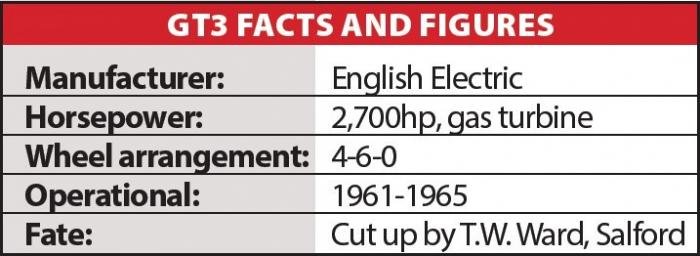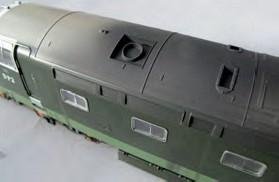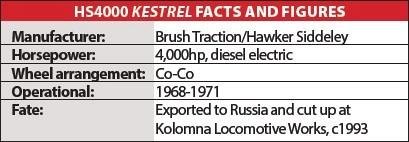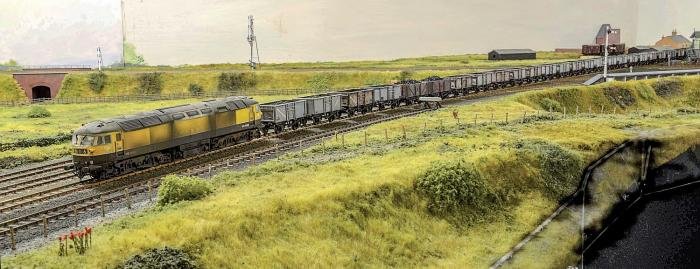
My aim in every aspect of modelling is to present everything looking as close to reality as possible. Kestrel was used for some months on coal workings from the Worksop area and here, on Roy Jackson’s magnificent ‘EM’ gauge layout (HM100), the beast takes the Gainsborough line through Retford with a long rake of 16ton minerals bound for March.
AN AURA OF MYSTERY still surrounds the various privately commissioned diesel locomotives that ran on British Railways in the transition era of the 1950s and 1960s. Not many people will have seen them in the flesh, and only the prototype Deltic still exists (although Kestrel, amazingly, was lying semi-dismantled at a workshop just south of Moscow until the early 1990s).
If you want the full prototype background to these one-offlocomotives, issue 174 of our companion magazine Modern Locomotives Illustrated is an excellent starting point.
For many years, working models of these one-offspecials were just as rare as the real thing – I’ve never seen a model of Hawk, though I recall an epic tussle with a fibreglass-bodied Falcon for which I scratchbuilt a can-motored chassis that featured no fewer than six gearboxes. Although Heljan and Bachmann have now covered most of the bases, with all manner of livery variations, we’re still waiting for one or two designs to appear in ready-to-run form including English Electric gas turbine prototype GT3 which KR Models is currently trying to spark enough interest to push a ‘OO’ gauge version forward to the development stage – visit www.krmodels.co.uk for more information.
My priority here is with suggesting ways of adding realism to your 4mm, ‘OO’, scale models. For obvious reasons, most people would be reluctant to do anything drastic to expensive limited-edition productions such as the National Railway Museum’s exquisite prototype Deltic. I have no such inhibitions, and in this feature I want to show you how I’ve given my fleet a makeover to present them in the workaday condition in which they operated on BR.
Based, as always, on photographs of the real thing, there’s no denying the all-pervasive aura of the steam era that settled on these locomotives – it’s ironic that Kestrel, the only prototype to survive into the post-1968 diesel and electric era, was arguably the scruffiest of the lot!
I hope, incidentally, that you enjoy the trainspotter-era snaps of these elusive beasts at work on BR – to me, they capture better than any glossy publicity shots the excitement I felt when sighting the real thing.
DP1 Deltic
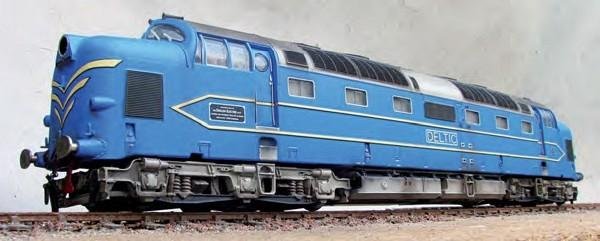
I weathered this Bachmann/NRM Deltic quite a few years ago, not realising (did anyone?) that it depicts the locomotive in as-preserved livery, with a slightly richer blue and minus the roof stripes that it carried when running trials on the Eastern Region.
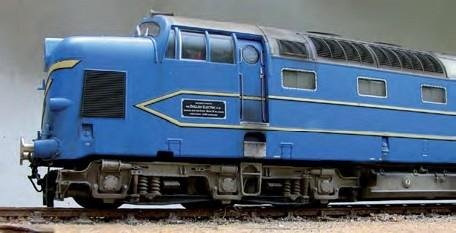
Front-end detail is key when weathering diesels. Note the kick marks by the doors and the faint marks caused by screen wash fluid running down the bodyside – weathering features also found on the production models – see HM140!
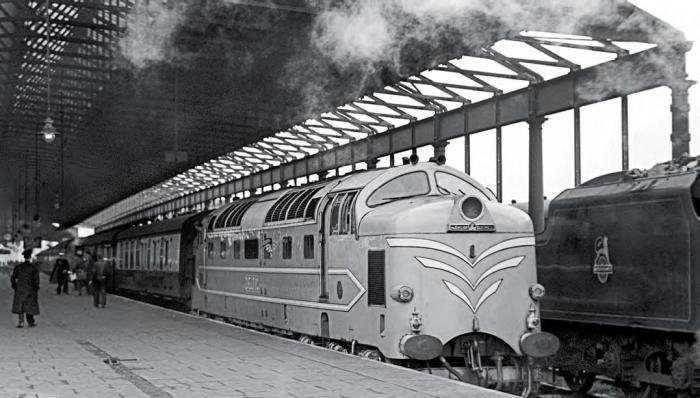
Introduced to service late 1955, the prototype English Electric Deltic underwent extensive test running on the West Coast Main Line between 1959 and 1961 before transfer to the East Coast Main Line which led to the order for 22 production machines. Here it stands at Rugby with a down service in April 1956. Note the travelling fitter at one of the engine room windows.
GT3

We covered my handbuilt model of GT3 in HM106/HM107. Much effort went into the external styling and finish of GT3 but it was still a working locomotive and I’ve used airbrush weathering to emphasise this. I’ve airbrushed a little matt-black sooting around the roof-mounted radiator and exhaust vents, blowing it backwards along the locomotive.
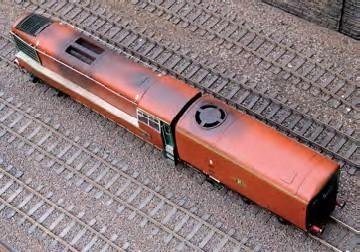
You can see this effect more clearly in this overhead view, along with further sooting from the train heating boiler in the tender.
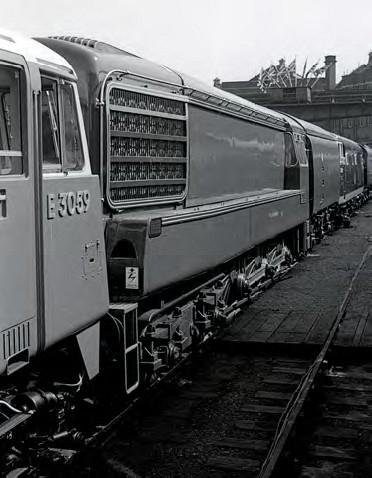
An unusual angle on GT3 at a 1961 rolling-stock exhibition, emphasising its similarity in shape and proportion to a streamlined steam locomotive.
Tim Shackleton Collection.
DP2
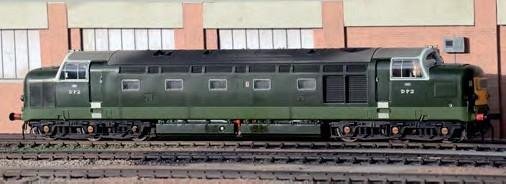
Photographs show that once DP2 acquired its ‘Deltic’ livery in 1965 the locomotive was invariably kept clean, but it’s amazing how effective a gentle toning-down can be. The Heljan model suddenly comes to life and acquires personality.
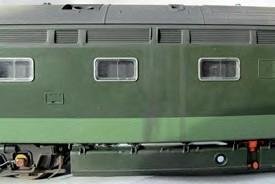
My airbrush weathering treatment was accordingly very simple – a mist of track colour and brake dust over the running gear, a well-sooted roof and some delicate rain marks running down the bodysides. I created the appropriate shades by combining Tamiya Flat Black (XF-1) and Red Brown (XF-64) in various proportions.
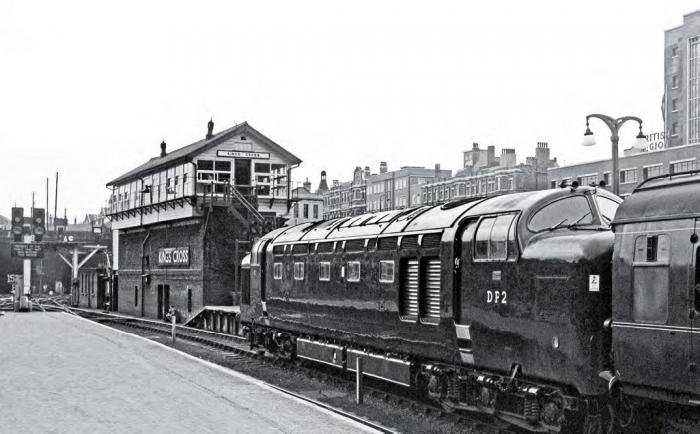
The London Midland Region kept DP2 pretty clean when it had the locomotive on trial in 1962-1963, but the standard deteriorated when it moved to the Eastern Region. The ‘Deltic’ lookalike - though it was very different internally - awaits departure from London King’s Cross for Newcastle in August 1963.
D0280 Falcon
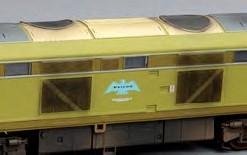
Perhaps I’ve been looking the other way all my life but I’ve never seen a picture of Falcon looking anything other than immaculate in the period when it carried this striking green-and-tan livery. As well as the usual treatment around the bogies and underframes, I’ve merely added a hint of blackening around the bodyside grilles and along the roof.

I masked offthe bodyside grilles and louvres so I could waft a gentle airbrushed coat of weathering over them without discolouring the paintwork. The roof grilles, however, were treated freehand – even with a high-quality airbrush you need to do this with restraint.
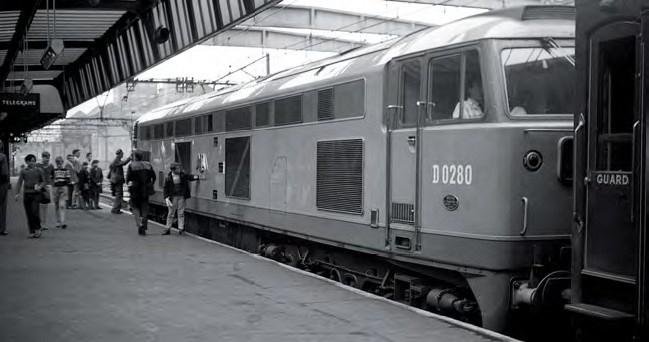
Admiring spotters cluster around D0280 Falcon after arrival at Sheffield Victoria with the Sheffield Pullman from King’s Cross. The gleam of the bodywork is readily apparent but there’s plenty of evidence of trapped dirt around the edges of bodyside panels.
Tim Shackleton.
D0260 Lion

I wanted to present Lion in something approaching box-fresh condition, its glossy white paintwork virtually untouched apart from this single smudge of carbon from the exhaust. The other port, I seem to remember, is a dummy.

I built my model of Lion many years ago by combining the shell of a Lima Class 47 with a Craftsman conversion kit. I find this kind of modelling very satisfying, and Lion has always been one of my favourites.

A hasty snap of Lion at Doncaster Works in November 1963, shortly before its return to BRCW. The locomotive is spectacularly filthy and the roof panels are raised for inspection.
Tim Shackleton.
10800 Hawk

The least-known, and least photographed, of all the test-bed locomotives was 10800 Hawk, rebuilt from a one-offdesign by H.G. Ivatt of the LMS. Not often seen on the main line, and not intended as a prime mover per se, it was basically a mobile laboratory used for experiments with AC equipment and the associated electronic control systems that were later embodied in the production of Class 56, 58 and 60 locomotives and the HST power cars. I’ve never seen an accurate model of Hawk in any scale. The closest I can manage is this ‘P4’ model of the donor locomotive, which I built from a Dave Alexander kit on a scratchbuilt chassis.
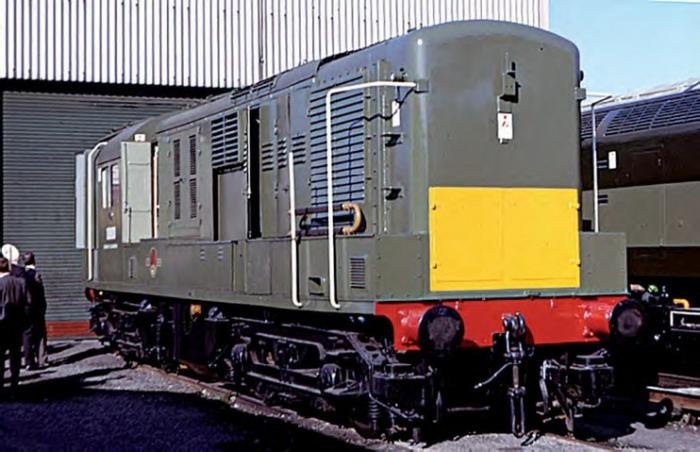
Hawk didn’t actually carry a name, just its running number and the cabside wording EXPERIMENTAL LOCOMOTIVE. Though owned and operated by Brush Traction it carried a BR badge and was painted in Sherwood green, the same shade as the lower bodywork of the Brush Type 4 alongside in this rare colour shot. Research work with Hawk concluded in 1968 and the locomotive was gradually stripped for spares, finally being scrapped in 1976.
Tim Shackleton Collection.
HS4000 Kestrel

We featured this reworked Heljan Kestrel in one of my earliest Hornby Magazine articles, back in December 2011 (HM54). I’d found 1970-dated photographs of both sides of the locomotive looking utterly degenerate and was keen to replicate this in miniature.

The reference photographs I was using showed evidence on partial cleaning at the cab ends, possibly as a result of propelling stock through a washing plant. Along with the bodyside streaking copied from my photographs, it’s another highly prototypical touch, infinitely more convincing than a generic all-over coat of weathering.

Diesel roofs are always filthy. Be sure to get paint into any deep recesses on the bodywork – I suggest you do these first, rather than trying to fill them in later, although you can always touch them in with a paintbrush.
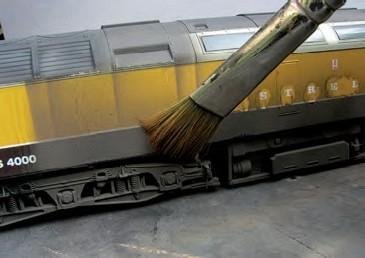
A broad, flat brush has many uses in weathering. Moistened with thinners, I’m using it to add texture to airbrushed weathering on the bodysides.
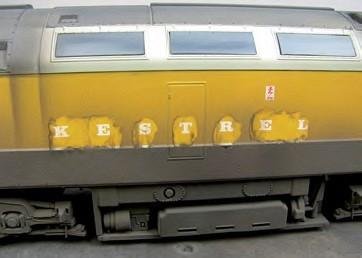
Good weathering thrives on small detail touches and here you can see how, on one side only, I’ve wiped the name clean letter by letter using a cotton bud. This is exactly as it was in the photographs I was using for reference.
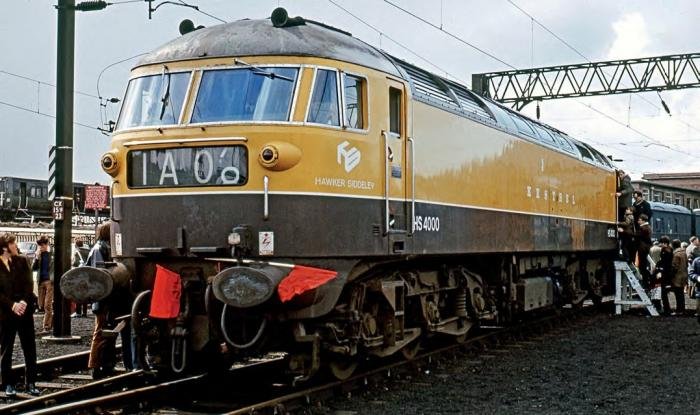
The last of the classic prototype locomotives was Kestrel. It was a popular exhibit at open days and here the 4,000hp machine is attracting a lot of interest at Crewe Electric on April 19 1970.









